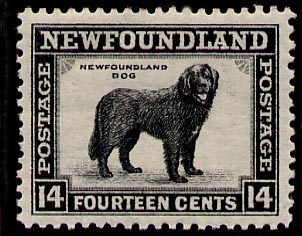
History

 |
Newfoundland History |
 |
Land Grab?
[This text was written in 1947. For the full citation, see the end of the document.]
Newfoundlanders had thought that the Labrador boundary dispute was settled by Privy Council award in 1927. But it refuses to be settled, and last week Newfoundlanders found that they might have to fight again for the bleak, ore-rich territory which runs from the Strait of Belle Isle to Hudson Strait. Quebec 's shrewd Premier Maurice Duplessis had his eye on the Labrador hinterland ( Newfoundland territory), (1) and there was no telling what he might do to back up his claim.
The latest ruckus started with the routine publication of new provincial maps by Quebec 's Department of Lands and Forests. The 1939 edition showed the Quebec-Labrador boundary following the height of land (most of it still unsurveyed, but known approximately) for hundreds of miles from the head of the Romaine River to Cape Chidley. The new edition showed all Labrador the same color as Quebec, and bore the legend: "The Quebec-Newfoundland boundary line is not indicated on this map, for cause." Lands Minister Bourque's bland explanation: "Aerial pictures reveal the existence of water areas which are difficult to place in the drainage basin to which they belong. This makes it more difficult to indicate the height of land."
The Quebec press began declaiming that it was "time to take over this territory," awarded to Newfoundland "through an unacceptable judgment." The Montreal Matin, recently bought by friends of Duplessis, threatened: " Newfoundland had better make the best of it: the Province of Quebec insists on taking part in the understanding which will . . . dispose of the Labrador question."
Underlying the sudden revival of Quebec 's interest in a territory which changed hands half a dozen times in Colonial days is a mass of iron ore, estimated at a billion tons, which lies astride the watershed. Quebec has leased the rights to 3,900 square miles on Quebec 's side to the Hollinger North Shore Exploration Co. Ltd., for $100,000 a year, plus 7½% of profits. Another Hollinger company controls 20,000 square miles on the Labrador side. Geologists think that the deposits are on a par with the wealth originally found in the fabulous Mesabi range in Minnesota . Maurice Duplessis figures that this wealth should belong to Quebec.
(1) Also covetously eyeing Labrador's ore was Vermont's Senator Ralph E. Flanders, who said it should be made available to the U.S. by a sort of reverse Lend-Lease, to compensate for U.S. reserves consumed in making armaments for the Allies.
Source : "Land Grab?", Time (Canadian edition), September 22, 1947 , p. 17.
Return to Canadian Views of Newfoundland's Entrance into Confederation
© 2004 Claude Bélanger, Marianopolis College |